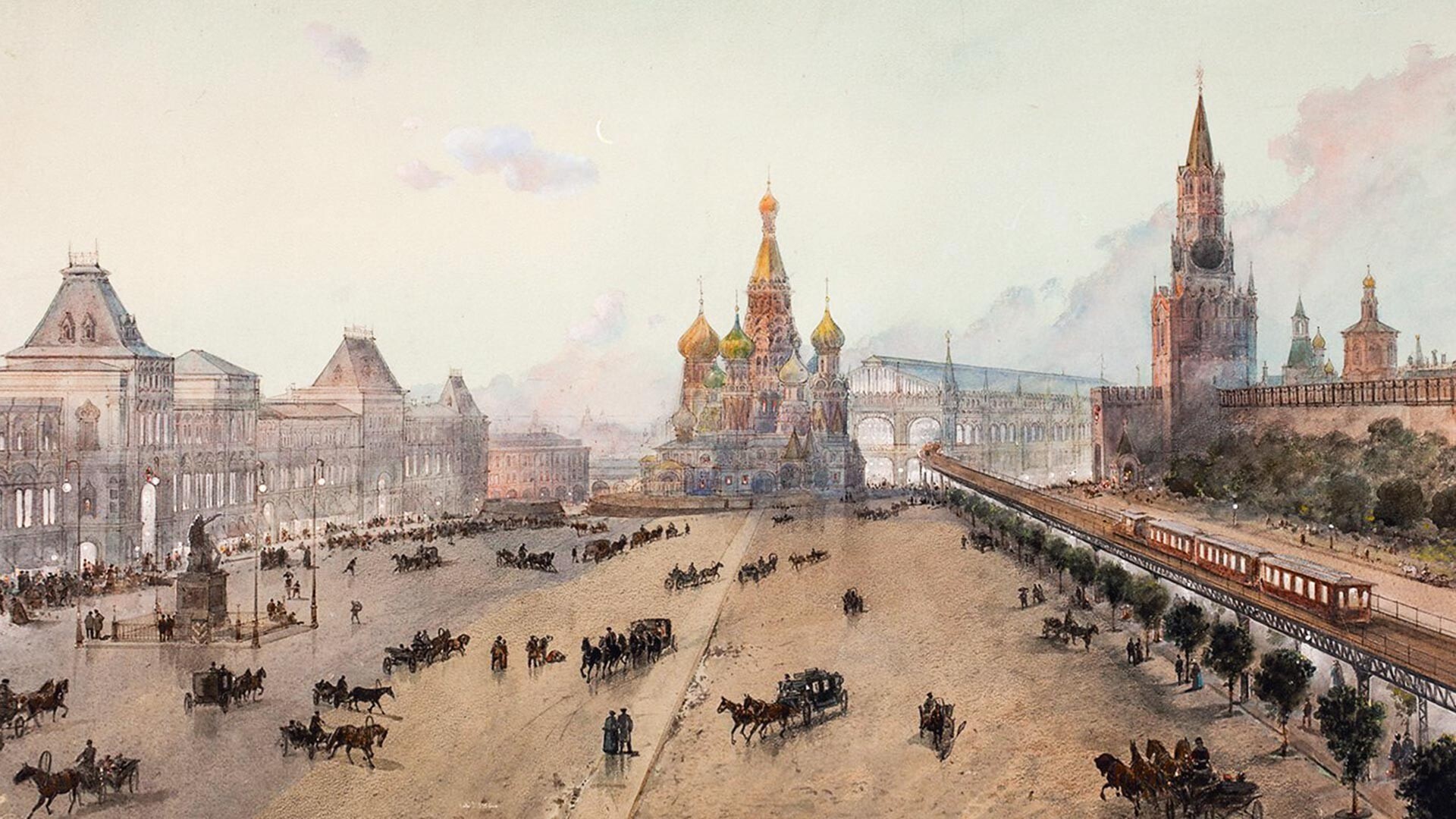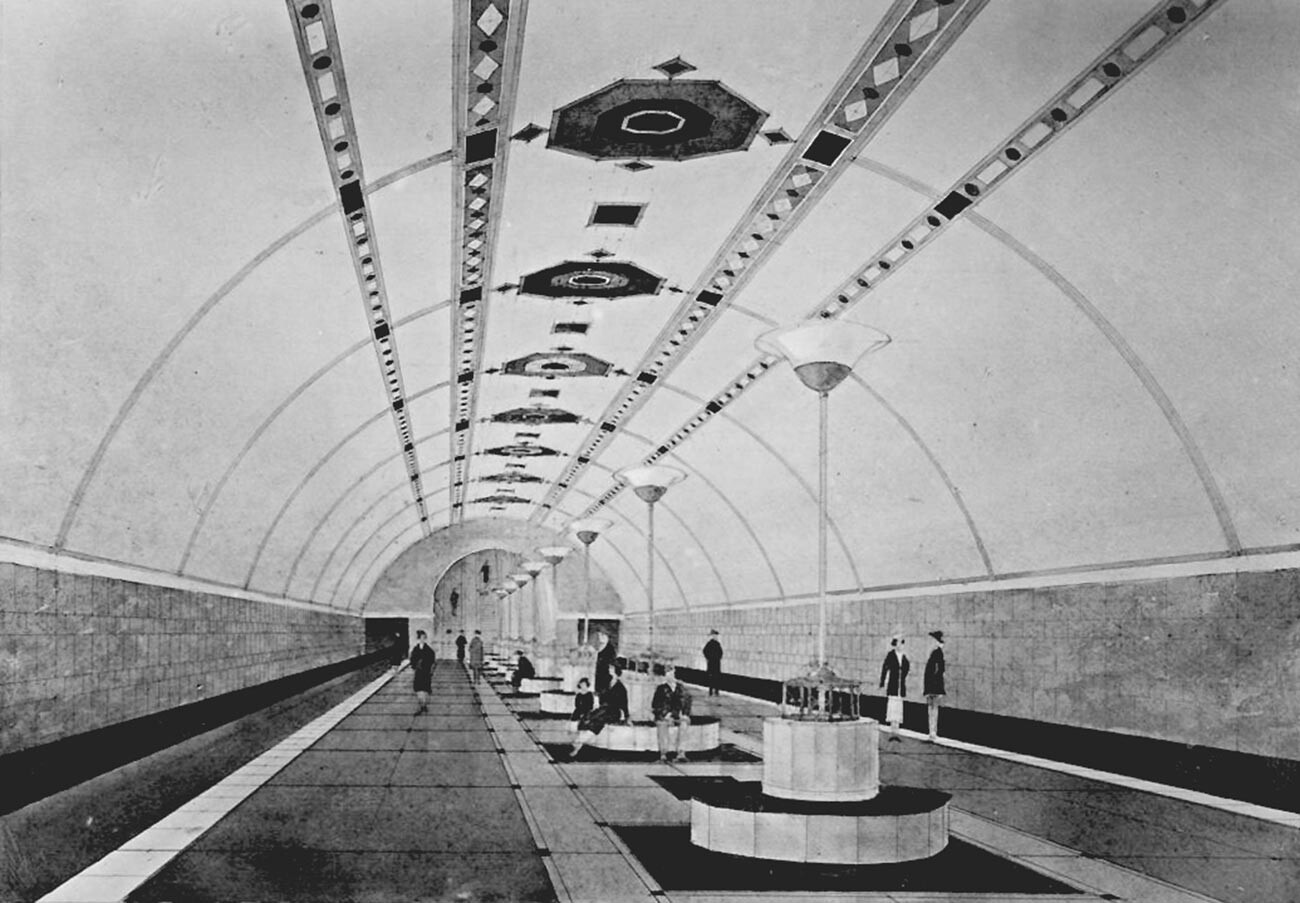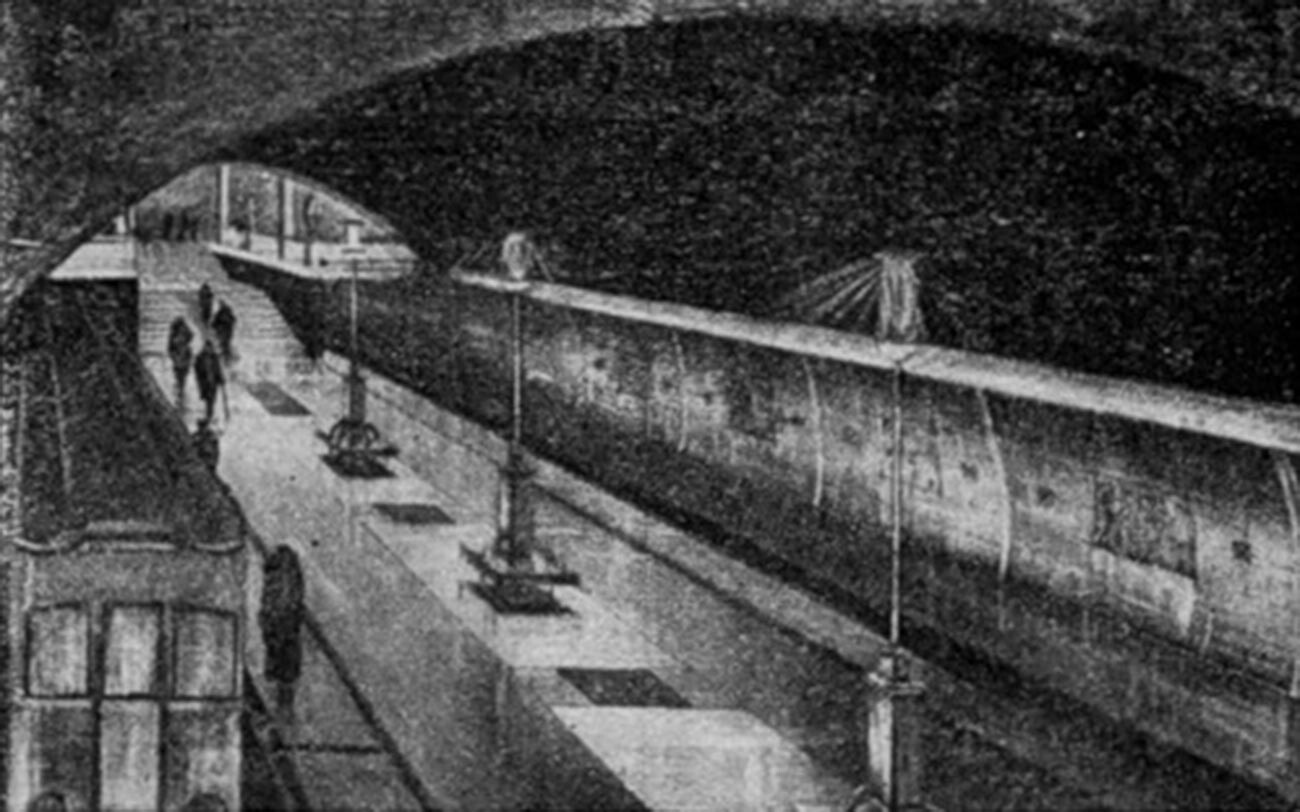Moscow metro stations that were never built (PHOTOS)
Underground on Red Square

In the late Imperial era, Russian engineers Pyotr Balinsky and Eugen von Knorre dreamed about building the first metro in Moscow and Russia. They turned to the city’s general-governor, Grand Duke Sergei Alexandrovich, proposing to build a speedy rail network in Moscow.
The metro was to span 105 kilometers, including above-the-ground and underground stations. Red Square was to become the biggest transport hub, with the central station lying on Vasilievsky Descent, adjacent to St. Basil’s Cathedral, and the underground station - under Teatralnaya Square. To build the metro, the engineers suggested demolishing all the “obstacles” - such as the many churches in the vicinity.

The radical idea, however, was met with disapproval, with Moscow’s Imperial Geographical Society dubbing it “an impudent encroachment on what is dear to all the Russian people in the city”. However, the ball started rolling.
After the 1917 Revolution, the Moscow Railway operator set about designing the metro in the 1920s, and it borrowed Balinsky and Knorre’s idea to build a station in the heart of the capital: to be situated right under Red Square.

Designed by architect V. Vladimirov and engineer A. Boldyrev in the innovative Constructivist style, the station was to have three levels and multiple underground passages for people to change lines. Alas, this plan never came to fruition.
Teatralnaya or Sverdlov Station

The stations designed by Boldyrev and Vladimirov looked totally different from what we see today. Their vision rather resembled the Paris underground, with a simple, laconic, utilitarian style that was worlds apart from the marble facade of today’s Moscow metro.
For instance, in their design sketches, tiled Teatralnaya Station (Sverdlov Station in the Soviet era) had platforms on the tunnel’s sides and a railway in the center looking like one of the numerous underground stops in some European city. In the end, architect Ivan Fomin’s solemn theater-themed design took the lead.
Three Paveletskaya stations

The most outstanding architects worked on the interior of Moscow metro stations, including the Vesnin brothers. These Constructivist architects came up with as many as three projects of a would-be Donbass station (this is what Paveletskaya was initially to be named).

They were to tell a story about the region’s industrial development, mining of natural resources, and etc. The Vesnins proposed using small mosaics as a ceiling decor, designing the station not to look overly ornate.

According to one of the projects, the lamps in the center of the platform were to help set a certain rhythm in the overall design. However, due to the war, none of the plans was actually built, even though the Vesnins’ project had won the competition. Incidentally, the already-made mosaics, designed by Alexander Deyneka, were subsequently used to decorate a different station - Novokuznetskaya.

Biblioteka Imeni Lenina Station
In the early 20th century, people were supposed to feel as comfortable as possible on the new means of transport - the metro. They were to completely forget that they were on trains roaring through the underground depths. This was the question of most concern when the first stations were designed.

For instance, architect Konstantin Dzhus-Danilenko proposed painting black the ceiling of Biblioteka Imeni Lenina Station (Lenin Library Station). It was to give the impression of passengers waiting for a train under the night sky. The effect was to be enhanced by benches and street lights along the platform. Yet, the project found little enthusiasm among authorities.
A different one design was ultimately picked, where the only thing that gave the impression of being above the ground was the asphalt on the platform. Only years later was it replaced with granite.
Old Russian Oktyabrskaya

As one of the most laconic, but at the same time one of the grandest stations on the Moscow Metro, Oktyabrskaya is a genuine tribute to Soviet military victories during World War II.
Architect Leonid Polyakov’s design instantly brings to mind the images of ancient churches: light-colored marble, themed bas-reliefs, torch-shaped lamps and, last but not least, an altar-like niche hidden at the end of the platform hall. Even the entrance resembles a victorious triumphal arch.
Meanwhile, Pyotr Revyakin’s project conveyed a totally different image. He saw the station built in the Old Russian style. Revyakin’s sketches depict Oktyabrskaya more like brightly painted boyar chambers, with flowing vault lines reminiscent of the Kremlin.
Multi-storeyed Kievskaya

The city’s metro saw a variety of ideas - architectural and technical alike - that were implemented, namely big transport intersections, interchange facilities and unusual stylistic choices, among others. There were also ideas that appeared to be well ahead of their time.
Architect Ivan Taranov worked on his project of a two-storeyed station for years. The project suggested that four railway tunnels lead to a single hall in a transfer station. Passengers were to reach their platform using short escalators: vertical interchanges were expected to prevent huge crowds.
The innovative idea proved truly inspiring, and it was put into practice when Kievskaya was built. In 1947, the cutting-edge station was devised as a special present on Stalin’s 70th birthday. Yet, having imagined the possible consequences should anything go wrong with construction, Metrostroy ultimately opted not to carry out the project.

